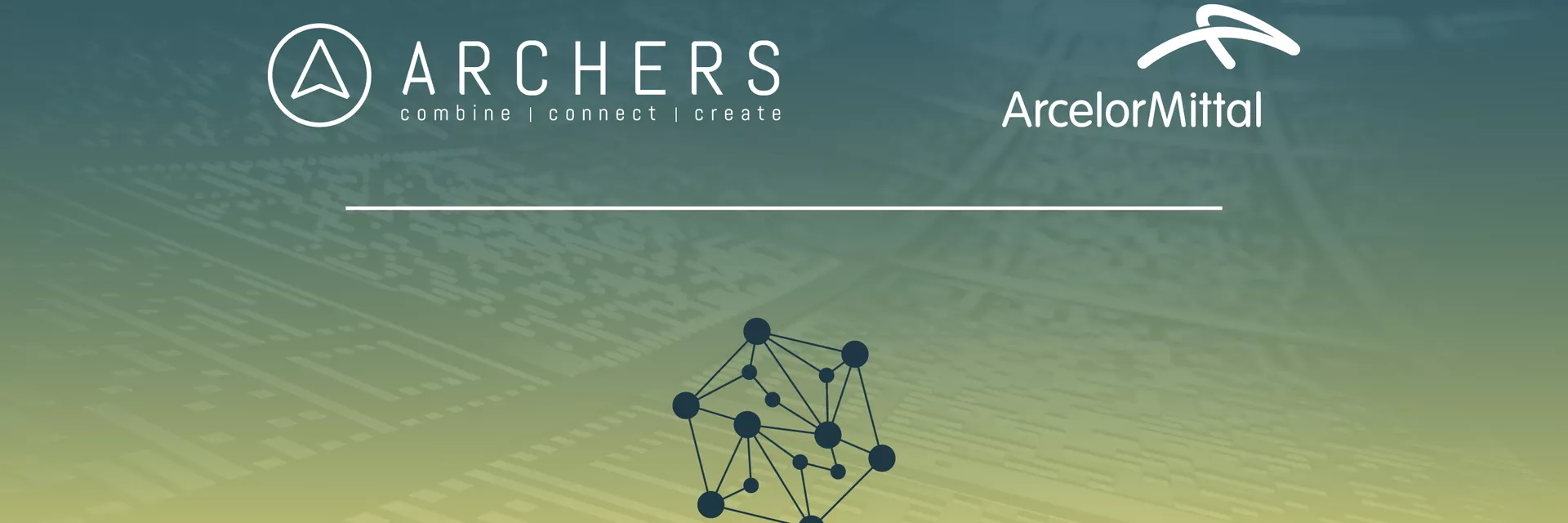Integration is a hot topic nowadays. Just imagine: a world without streaming platforms, online shopping or digital identity. Hard to picture, right? Well, this would be our reality if integration would not exist. That’s why our integration architects Matthias & Gilles were happy to tell graduates all about their journey towards integration and why they love to work in integration so much!
How it all started
“Fifteen years ago, I graduated from a bachelor’s degree in applied informatics”, Matthias kicks off. “I was eager to start my career as a software engineer. As I was looking forward to working with different clients and learning about multiple business contexts, going into consultancy felt like a logical choice. As a Java developer, I was involved in many big projects. Seeing my work being used by various people and companies was very rewarding. However, it always felt like something was missing….” Matthias states.
What he missed was to dive under the hood of technology. Not just developing, but really understanding the underlying logic: How will the application bring data to the frontend? How are you going to combine the data received from older applications or purchased software packages? How does the underlying integration work? “That’s what was really triggering me”, Matthias continues.
Likewise, Integration Architect Gilles was immediately fascinated by the world of integration, because:
- You’ll never work for 8 hours straight behind a desk without talking to anyone, you’re always part of a diverse team, working towards a common goal
- Both soft skills and hard skills are required to work and grow within integration.
- Integration is a dynamic field, which means you get the chance to work with groundbreaking innovations. Companies often have lots of legacy code, but by using the right integration techniques you can use the integration layer to build new and fascinating technological stuff, above the application layer.
- You get in touch with a lot of different technologies. As an integration specialist/ architect, you investigate those technologies, outweigh the pros and the cons to select the appropriate technology and make them match.
- As an integration architect, you learn to make abstractions of the advantages and disadvantages of those specific technologies. Meaning you learn to think in terms of patterns and frameworks.
- Integration is everywhere – it’s between applications, between microservices, between industrial machines, companies…and so on.
- Finally, you tend to come into contact with innovative companies that want to tackle integration challenges, hire the right people and offer the needed freedom and challenging context.
Building bridges
In short, integration can be compared to two islands. Two islands who want to work together efficiently. Take for example a Java island and a .NET island who want to collaborate. The bridge between those two islands is the integration layer.
“To offer you an example of why integration is so important, let’s take a look at streaming services. When logging in, the service offers you content based on your behavior and preferences. Under the hood, all of this is made possible through APIs. Meaning invisible work offers us functionalities that we often take for granted.” Matthias explains.
To illustrate: the start page of Netflix. We are offered suggestions, a watch list and some films or series you were watching. All automatically gathered thanks to integration. Also the search function can show us the results by calling underlying APIs.
Another example is online shopping, where APIs form the backbone of the underlying processes to get the order at your doorstep.
Banks experience added value from integration as well. Thanks to the PSD2 standard, there’s a lot more transparency from banks, resulting in the possibility to conduct loan simulations, to start adding accounts from different banks, to get insights into your expenditure pattern… Thanks to APIs we no longer need to go to the bank for a cash withdrawal, or to transfer money to another account.
“But how should this integration layer look like?” Gilles asks, “It can be enough to build a simple bridge, but it can also be a complex integration bridge.” Gilles explains.
Therefore we refer to a couple of crucial decision makers:
- The first one is whether or not we need data to be sent in real time. For example: are we implementing critical business processes where seconds matter? If so, then we have to bet high on speed.
- Some applications don’t speak the same language. In this case, the integration solution can serve as a translator between those two applications.
- The third one is scalability. Of course, we want our application to be as scalable as possible. However, scalability costs money.
- Equally, security is of paramount importance. Often, very sensitive data passes through the integration layer, and you don’t want this data to leak.
- A final decision maker is the triangle of time, cost and quality.
Accomplishments to be proud of
“One project I’m really proud of is the work we did for the Crossroads Bank for Social Security”. Matthias continues. “It’s a central organ in our social security network, taking a commitment in facilitating and structuring data flows between all the social security institutions. I was able to tackle multiple projects, all with a social impact. For example the social tariff for gas and electricity. It’s a social tariff granted to people who meet certain conditions in terms of income or disability.”
“Before the project, people had to apply for that social rate all by themselves. A certain process had to be followed, forms had to be filled in and submitted, people had to wait for their result… Sometimes people were unaware that they were eligible to make use of the social rate. As these are vulnerable groups, an automated process was very welcome. Through the combination of customer files from energy suppliers and individuals, lists from the mutual insurance companies and the federal government services, the Crossroads Bank for Social Security was able to automatically check for each individual, whether or not they were entitled to the social rate.” Matthias explains.
“As a result, people no longer had to submit the application themselves, reducing the amount of missed rates. In my opinion, this is a fantastic improvement and I’m still very proud of this project. Without integration, this would never have been possible”, Matthias glows.
“What I’m really proud of”, Gilles adds, “is my project for Symeta Hybrid, part of the Colruyt Group. They offer solutions for document streams such as printing, archiving but also digital transformation. As part of their digital transformation project, we installed a conversation platform between the client and customer”, Gilles continues.
A conversational platform consists of all kinds of connectors that facilitate the process of interacting with customers in terms of payment, communication via email or SMS or even letters that are automatically sent out when a reminder is needed. Resulting in a more informal way of interacting with clients.
The conversation platform is built according to the LEGO principle: small modular blocks are used to build a platform tailored to specific business processes. For example finance, marketing or logistics departments all have different needs, but their processes can be built with the same building blocks. This way, we aimed to set up a wide possible range of conversations, using the same basic blocks.
Gilles briefly dives into another one of his projects, this one at ArcelorMittal. “ArcelorMittal’s plants are globally distributed. Communication between these plants is of major importance, for example when resources need to be exchanged. An integration layer is used to facilitate this exchange process. This results in the exclusion of many manual operations. Another integration case was the communication between trucks, enabling them to see where, for example, an important stock is located on the road” Gilles explains.
“For both cases, I introduced a cloud solution. As the cloud was new to both of them at the time, I took them along the way in their journey. Think about research and the definition of a cloud strategy. Next to that, we always focus on training the development team. Large companies come with big teams, who need standards and a reference architecture to get everybody on the same line.”
Why integration?
Integration is often not visible to end users. However, integration makes it possible for different programs to communicatie resulting in massive added value. The main reason for Matthias and Gilles to choose a career in integration.
But why did they choose Archers?
- Matthias: “When I joined Archers, it was immediately made clear that I would get the freedom and trust to tackle projects and new initiatives autonomously. It started with the ‘Enterprise Connectivity Program’. Archers was already working with this program, but they were eager to take it to the next level. I was able to dive into the API Management subject together with some colleagues and go all the way with it, which was a perfect match with my personal ambitions.” Matthias explains.
“Today, the program is rolled out to many different clients, which is amazingly satisfactory to witness. You get the chance to take ownership of initiatives, shape them and apply them to customer projects. But this principle applies not only to technical matters. Take our knowledge sharing as an example: the whole community is encouraged to take on initiatives, discover other domains such as marketing, management, and many more”, Matthias concludes.
- Gilles: “Every client you work with has its own challenges from which you can learn a lot. At Archers you will be surrounded by seasoned experts who will inspire you and teach you a lot. A very important aspect in our domain where knowledge evolves at a very fast pace. That’s why I value our monthly knowledge-sharing days – so called AKDs – so much, as an enormous amount of knowledge is shared on these days!”
“It’s really important to work for a company where you’re allowed to apply things yourself. Because the lessons learned will be of massive importance for your career. You may also run into a wall at times, but these are the situations that let you grow. And we hope to welcome all of you in the fascinating world of integration someday!”
What about you? Ready to kickstart your integration career? Apply now!
Some more integration blogs for you
ALWAYS LOOKING FORWARD TO CONNECTING WITH YOU!
We’ll be happy to get to know you.









